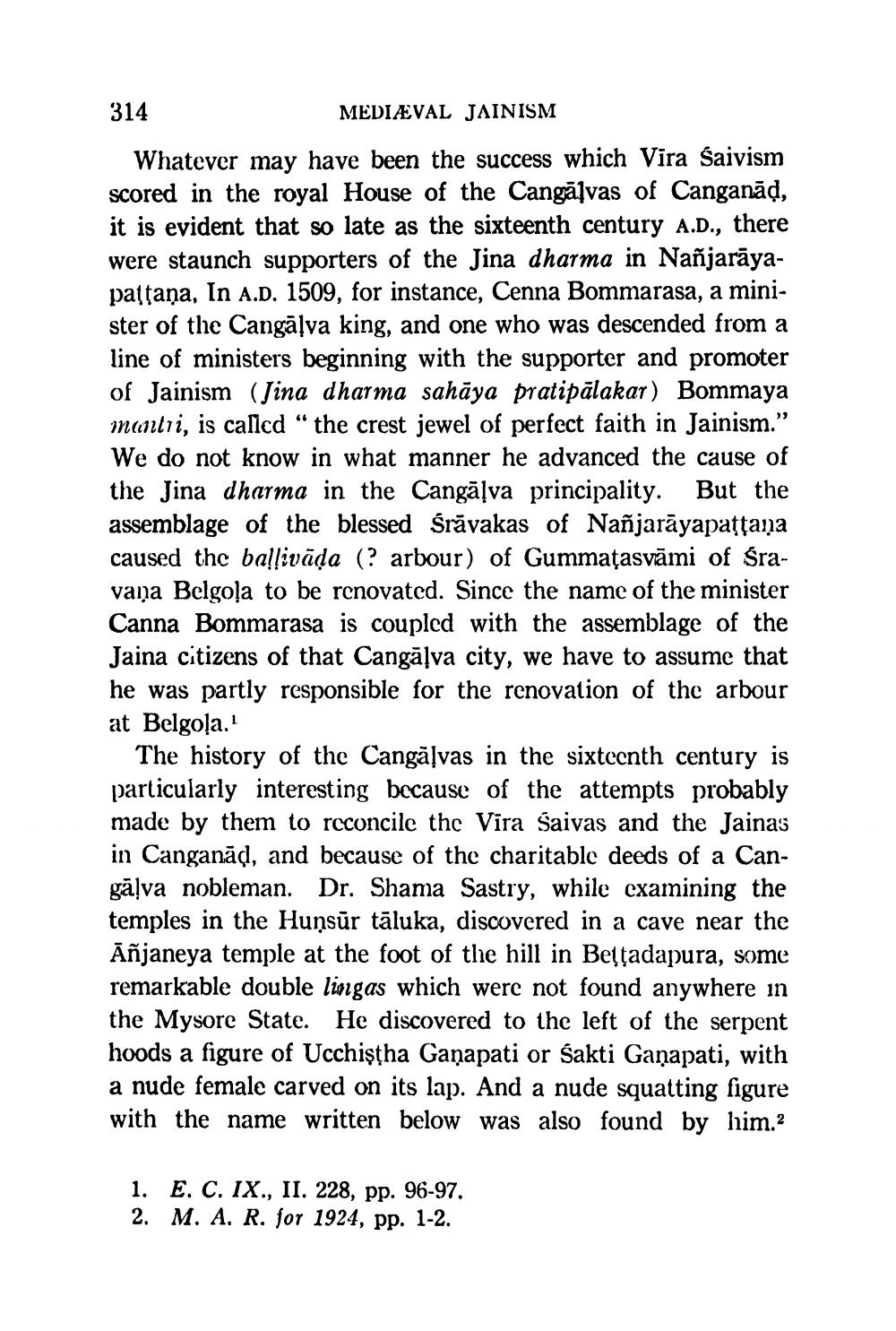________________
314
MEDIÆVAL JAINISM Whatever may have been the success which Vira saivism scored in the royal House of the Cangā vas of Canganād, it is evident that so late as the sixteenth century A.D., there were staunch supporters of the Jina dharma in Nañjarāyapastaņa, In A.D. 1509, for instance, Cenna Bommarasa, a minister of the Cangāļva king, and one who was descended from a line of ministers beginning with the supporter and promoter of Jainism (Jina dharma sahāya pratipālakar) Bommaya mantri, is callcd “the crest jewel of perfect faith in Jainism.” We do not know in what manner he advanced the cause of the Jina dharma in the Cangāļva principality. But the assemblage of the blessed śrāvakas of Nañjarāyapattana caused the ballivāda (? arbour) of Gummațasvāmi of śravaņa Belgoļa to be renovated. Since the name of the minister Canna Bommarasa is coupled with the assemblage of the Jaina citizens of that Cangāļva city, we have to assume that he was partly responsible for the renovation of the arbour at Belgoļa.
The history of the Cangāļvas in the sixtecnth century is particularly interesting because of the attempts probably made by them to reconcile the Vira Saivas and the Jainas in Canganād, and because of the charitable deeds of a Cangā!va nobleman. Dr. Shama Sastry, while examining the temples in the Hunsūr tāluka, discovered in a cave near the Añjaneya temple at the foot of the hill in Beļţadapura, some remarkable double lingas which were not found anywhere in the Mysore State. He discovered to the left of the serpent hoods a figure of Ucchiştha Ganapati or Sakti Ganapati, with a nude female carved on its lap. And a nude squatting figure with the name written below was also found by him.?
1. E. C. IX., II. 228, pp. 96-97. 2. M. A. R. for 1924, pp. 1-2.




